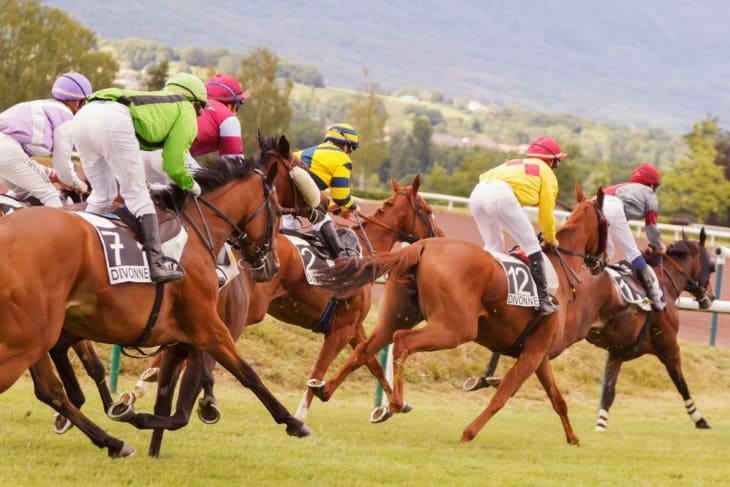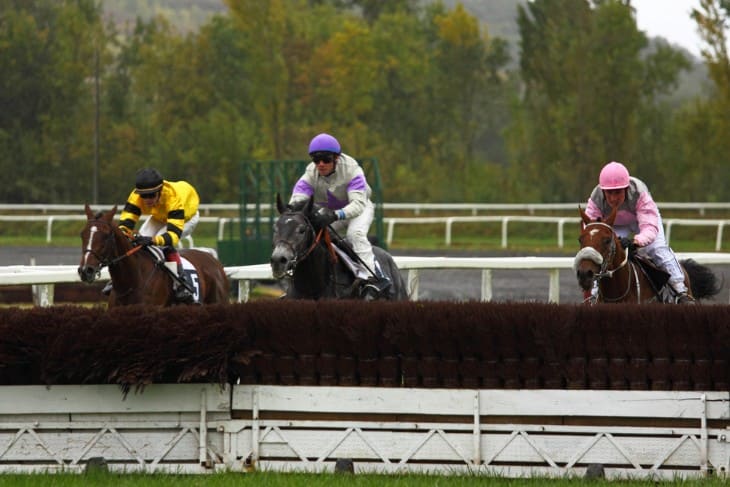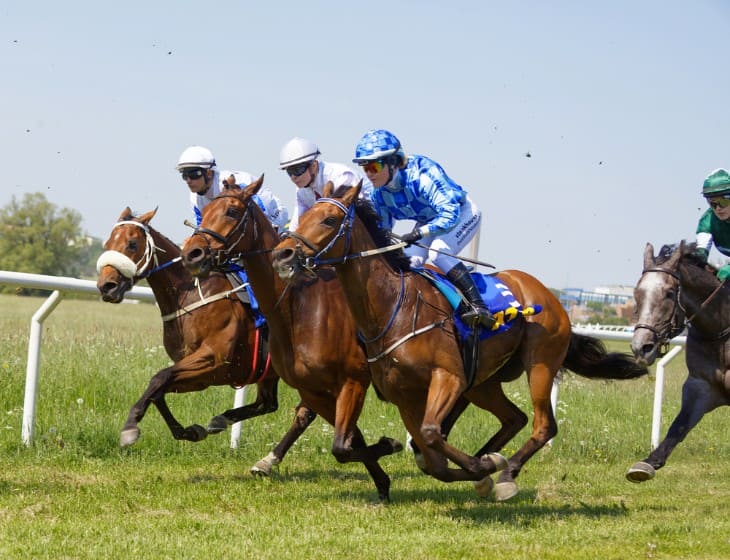One of the key principles in horse racing is to ensure fair and competitive races. And, how do you do that? The answer is by dividing horses into different classes. The idea is to categorise horses by their past performance. In that way, it’s easy to determine the level of competition and the actual quality of horses in a particular race. The whole idea is to put horses of similar abilities together. So, let’s take a look at the different classes in UK horse racing.
Class 1
As the name suggests, Class 1 is the pinnacle of the sport. Here, you will find the most renowned and prestigious events. We are talking about events that attract fans from all over the world. We are talking about races with historical significance, which further leads to substantial prize money and, of course, the presence of the top-tier racehorses. When someone talks about Class 1 in the UK, it primarily refers to major events like the Grand National, the Derby, the Gold Cup etc.
It’s needless to say the completion is extremely tough. Simply, we are talking about the battle of proven horses, of elite competitors that proved their abilities to perform at the highest possible level. For every horse and jockey, these events represent the most important moments of their careers, which can make a significant impact on their future, whether it’s about competition, breeding prospects or something third.
As mentioned, prize money is exceptional in Class 1 races, but the significance of these competitions extends way more. These events have a comprehensive impact on the racing industry, with the unique ability to draw not just dedicated followers, but casual fans as well.
Class 2
Class 2 races are a major domain in the UK horse racing scene. They are characterised by fierce competition between the top racehorses in the country. While they may not be as prestigious as Class 1 races, these events are still some of the best races in the country. They often present a golden opportunity for horses to show off their capability before hopefully moving to much higher classes.
Moreover, the Class 2 races consist of horses with high potential, and the race is faced with a variety of experienced and promising horses. There is considerable purse money for the Class 2 races, and it draws owners, trainers, jockeys, and horses. They can be organised in different racecourses and some distance away, designed for different horses and races.
Class 2 races have much importance for the career development of young racehorses. Since the participants are promising young racers, the Class 2 stakes are watched with great interest by the fans. The results recorded from these races may largely determine the owner's and the trainers’ choices of further starts and the possibility of proceeding to the next category.

Class 3
Class 3 offers a competitive grade and racing quality of horses, and one can find winners with race records already established and horses still on the rise. Both experienced campaigners and budding racehorses can non-biasly compete equally. Even though Class 3 races are not as glamorous as Class 1 and 2 competitions, they are equally valued as the two due to their fine performances and an opportunity to display thrilling racehorses.
The competition in Class 3 races is stiff, as horses are trying to either make a name for themselves in tougher company or continue their good form. It is because younger horses trying out higher classes use these races to show their potential or older horses regain their best form. Class 3 races often have prize money decent enough to draw owners, which makes the race more competitive.
In conclusion, Class 3 races are versatile and can be sprints, middle-distance, or longer-distance competitions. There is often more than one race format within this class to suit horses with various strengths and racing tendencies. Most trainers utilise Class 3 races to try and test their horses in preparation for the future. Thus, they significantly influence the careers of certain racehorses and ensure the competitiveness and prestige of UK racing as a whole.
Class 4
In short, Class 4 races are essential to the UK horse racing ecosystem. They bridge the performance gap between the most competitive classes and racer’s developmental stages in their career. Horses that have just begun their career can enter a race of this class to experience thoroughbred races, build confidence, and demonstrate to fans and funders that they are worth investing in. Therefore, even though they are not as prestigious as Class 1 or 2 races, they play an important role in promoting the talent of the horse racing community.
The Class 4 horse races generally vary in their length and provide varying types of races to suit different horses’ strengths and specialities. They feature a mixture of in-form horses and inexperienced runners, which increases the unpredictability factor and fan engagement. As such, trainers target Class 4 races to put their horses on the right course and increase the possibility of winning their races while also improving their racers over time. It eventually contributes to the UK horse racing sector’s promotion of thrilling, competitive racing events.
Class 5
Class 5 is more or less a facility for up-and-coming talent, with as much chance for horses that are not at the paramount level of competition. These races are attainable venues used to get the horse's race acquainted, their capabilities grow and be ready for tougher events in the upper classes. Though frequently disregarded when compared to Class 1-4, Class 5 races are essential opportunities in the maturation and development of racehorses.
Class 5 races often have combinations of horses in the early days of their career, horses coming back from a break and horses still finding their abilities in racing. They are seen as developmental races, to find out which horses may move to the top classes. They are also rewarding to the winning owners and trainers who are given cash prizes. However, the prize money is not that great compared to higher classes.
Overall, UK Class 5 races include numerous race options, ranging from sprints to longer contests, and different types of horses. They contribute to the GRA and English horse racing spirit and overall make the racing landscape diverse and competitive. English horse racing needs a class level for underdogs to win, three-year-olds to grow and evolve, and seasoned campaigners to revive their form. Thus, Class 5 races are surely a vital part of the UK racing pyramid.
Class 6
Class 6 and UK horse racing as a whole form the base level of competition. Primarily, these races are for horses at the start of their racing experiences or for those more experienced horses that can no longer be competitive with their counterparts in the highest classes. In this regard, Class 6 races are critical not only for allowing horses to participate in races that suit their abilities but also for giving chances to newer horses and those that are too old for the toughest races.
Class 6 – these are horses that are still quite raw in terms of their knowledge of the races, as well as race conditions. In other words, Class 6 races represent a relatively low barrier to entry for horses barely new to the competition or that haven’t proven to be anything special. The prize pool in such competitions is also not the largest, but it still motivates owners, coaches, and jockeys to compete in competitions that correspond to the current stage of development of the horse.
In conclusion, Class 6 races come in many forms and distances to accommodate different breeds and racing styles. However, this class undoubtedly fulfils its intended purpose as a cornerstone of the UK horse racing system. These races provide a framework for developing talent, allow horses to advance with skill level, and reserve a space in the sport for all horses at all levels.

Things to Keep In Mind
It's important to note that the classification of races into different classes provides a structured framework that extends beyond a mere hierarchy based on ability. Within each class, races can exhibit a rich tapestry of diversity, influenced by a range of factors that are meticulously considered to ensure fair and balanced competition. The variations encountered within a class are a testament to the intricacies of horseracing as a multifaceted sport.
The pivotal factor of race distance significantly shapes the dynamics of each contest. Marathons such as stamina-testing or lightning-fast sprints that require explosive speed are offered as two of the options, with a variety of distances between the two extremes. Furthermore, the surface on which it is held, the traditional grassy turf and the more durable all-weather track present an additional degree of complexity, as some horses may be comfortable on one and unadaptable on the other.
Age restrictions, a hallmark of horseracing classification, offer a nod to the developmental trajectory of these equine athletes. Races designated for two-year-olds, for instance, provide a platform for the fledgling talents of the racing world to make their mark, while races for older, more seasoned horses showcase the refinement of skills acquired over time. Gender restrictions further diversify the landscape, with races exclusively reserved for fillies and mares, allowing these exceptional athletes to shine in their own right.
What About Handicapping?
The strategic concept employed in horse racing to ensure balanced and competitive races is called handicapping. Basically, horses are assigned weights commensurate with their past performance levels and capacity. It aims to equal the track by offering each horse a fair chance of winning, regardless of past performance achievements. The impetus for this principle is to promote more equal finishes with as much unease as possible to ensure all races know the final result.
Handicappers who are experts in their field examine a horse’s prior race experiences, speed figures, the jockey’s track record, the trainer’s win rate, and other pertinent aspects to conclude how much weight should be added or subtracted from a particular horse. In this manner, weak horses are given less weight to slow stronger horses down, while the strongest horses are given more weight. The challenge comes in distinguishing the precise weighting for a complete situation and evaluating a horse’s true potential. Handicapping provides a new approach for horse racers to get pleasure from watching horses battle to secure victory.
Summary
United Kingdom horse racing divides horses into different classes based on their performance levels and experience. The classes are rated according to their significance, with Class 1 being the most elite and Class 6 being the beginner’s level. Classes also have distinctions in terms of prize pool raffles among horse owners and jockeys. Classes’ races are further tailored to specific distances over which the horses run, years and – or gender and oftentimes the racing surface. Furthermore, there is a system of handicapping intended to make racing more captivating for fans while making it fair and unpredictable. The UK racing class system described above makes the game vibrant due to races for virtually all horses regardless of their performance stages.
For more information:








